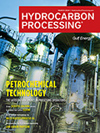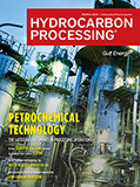Treating
Optimize process performance and reduce emissions by using process analyzers
Whether a refinery process involves the creation of fuels from crude oil or the production of biogas, process analysis can help to address the many challenges involved in operations.
Innovative approach to accelerating the startup of a gasoline block and associated units at Saudi Aramco’s Jazan refinery complex
This article elaborates on the startup of a refinery’s heavy naphtha reforming unit with an alternative approach to the initial unit design, including an evaluation of several startup techniques to ensure the adequacy and practicality of the selected option.
How to gain an advantage from the propylene production gap—Part 2
This work will detail the available processing routes capable of maximizing propylene yield in refineries, allowing refiners to gain advantage from the propylene market.
Advanced hydrocracking unit flow scheme optimization and integration approach to maximize refinery margins for a residue upgrading project
The integration of a solvent deasphalting and hydrocracking upgrading complex provides a favorable techno-economic return for residue upgradation at relatively lower capital expenditures vs. other alternatives for a brownfield project.
Refineries’ pandemic turmoil—KNPC’s gasoline demand: Opportunities and challenges
The COVID-19 pandemic is regarded as one of the most exceedingly difficult challenges faced in the oil and gas industry's history.
Implement innovative corrosion management solutions for biofuel refining—Part 1
The production of carbon-neutral and renewable transportation fuels is growing rapidly, driven by the need to find feedstocks beyond fossil resources.
Reliable naphtha reforming catalyst testing
Naphtha-to-gasoline refining plays a significant role in the petrochemical refining industry.
Defossilizing the FCCU via co-processing of biogenic feedstock: From laboratory to commercial scale
Oil demand is expected to reach record highs this year1 after a sharp rebound following the COVID-19 pandemic.
Editorial Comment: Advancing catalyst technologies and a focus on plant optimization/efficiency
For nearly 100 yr, catalysts have been used within the processing industries.
Business Trends: Tier 3 gasoline production: The value of flexibility in volatile fuel markets
Despite the forecasted trend of declining demand for transportation fuels, many markets still depend heavily on these crude oil derivatives to sustain economic activity.

- China's March jet fuel exports jump 77.4% from a year earlier 4/18
- Nigeria strikes deal with Shell to supply $3.8-B methanol project 4/18
- Singapore fuel oil stockpiles rebound to 8-week high on higher imports 4/18
- Clariant launches new CATOFIN 312 propane dehydrogenation catalyst 4/18
- Solvay inaugurates new blowing agent production unit in Rosignano, Italy 4/18
- Meridian Energy Group’s Davis Refinery Project in North Dakota (U.S.) will be the world’s first net-zero carbon refinery 4/17




